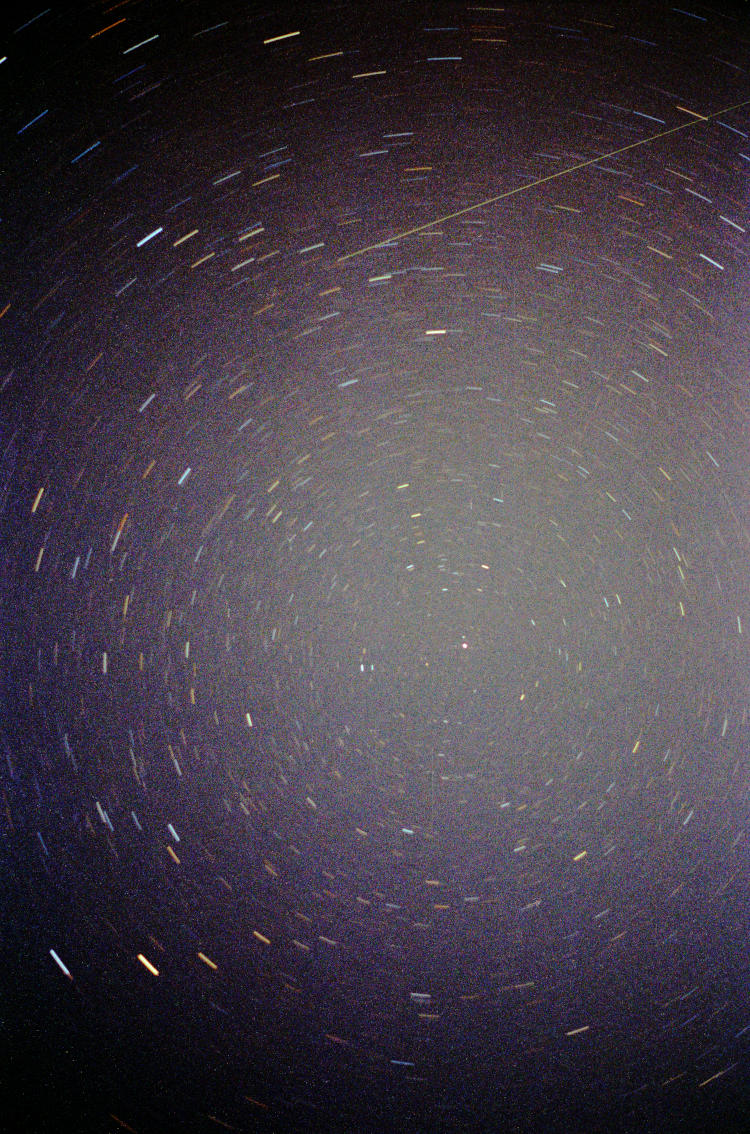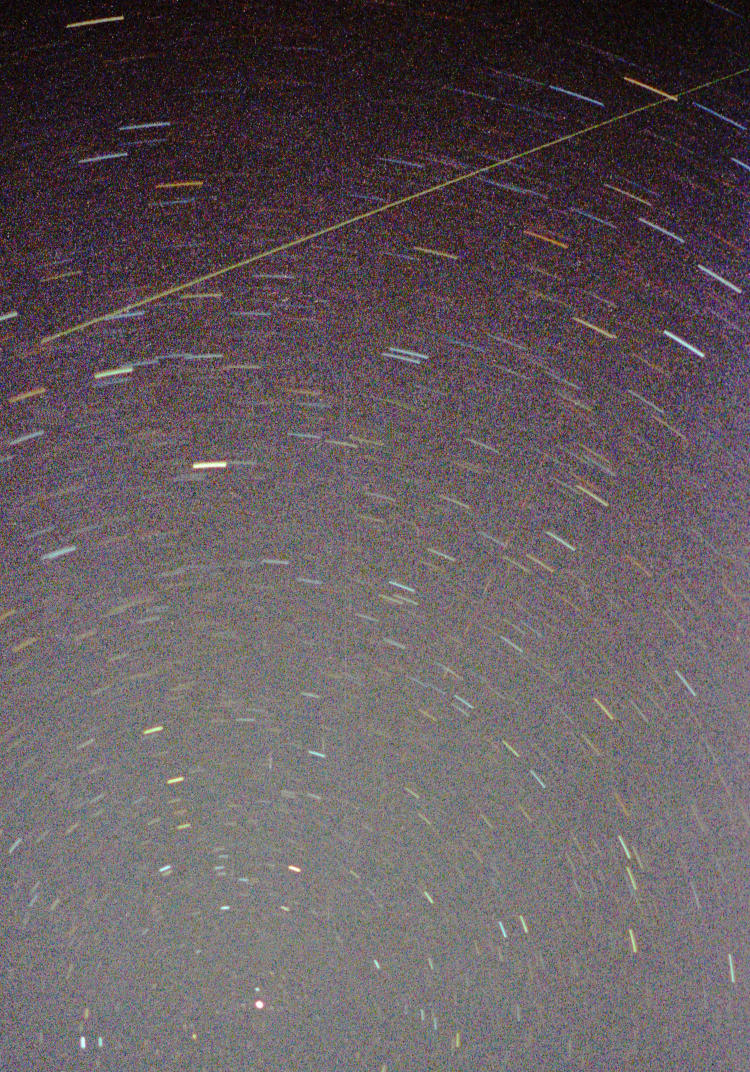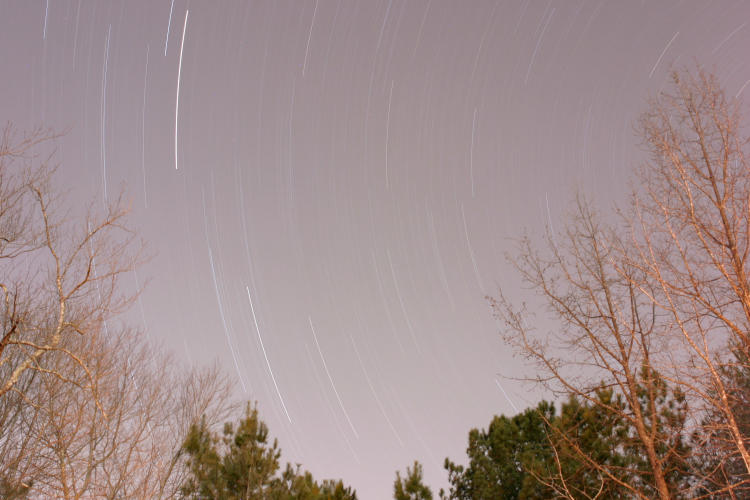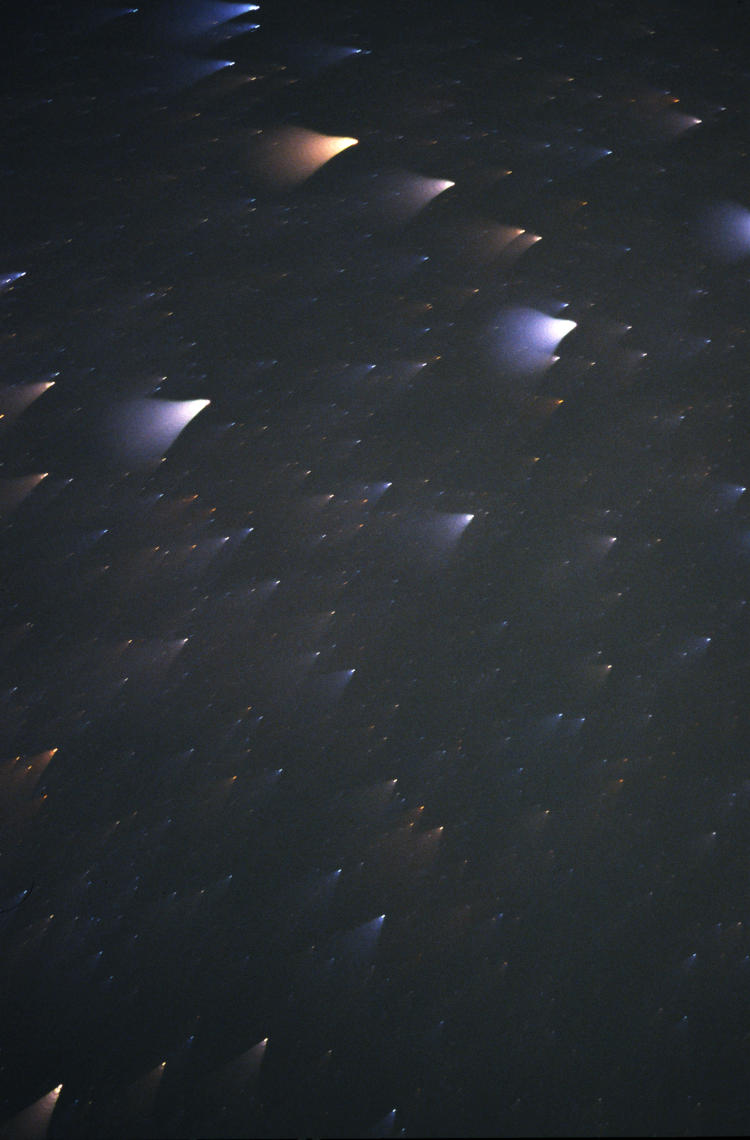What were you up to 35 years ago?

I was a bit surprised to find this one while reviewing my old negatives, because I don’t remember it at all. Nonetheless, I can pin it down to central New York in 1987, and even better, it most likely was taken on August 13th. Naturally, this is a long night exposure anchored on Polaris, the north star, and shows a long-trail meteor – probably. And definitely a jet, but you have to look carefully for it.
Immediately after this single frame in the strip is a pic of my dad proudly holding a giant mutated double-beet, but within another couple of frames are photos from Wildwood, NJ, from a trip I took there in August 1987. Using the webbernets, I determined that there was a meteor shower, the Perseids, peaking on August 13th, which was likely the reason that I tried this, my first attempt at a star trails exposure. And it really didn’t turn out half-bad, considering the film (Kodak 1000) and camera (Wittnauer Challenger.) And let’s face it: that’s a really distinct yellow-green meteor in there, a decent capture for the first attempt, and something that I’ve tried and failed to repeat or improve upon for decades.
There’s little possibility that it’s a satellite, especially since there were probably less than 1/10th the number then that there are now, not to mention that it’s ridiculously bright and not aligned with typical orbits. It isn’t a plane because there’s no evidence of strobes, like the faint line almost perfectly cutting across to Polaris. Which, in itself, helps put a time to it, because few flights took place after 10 PM in that area. And it isn’t a scratch, because it has a color and even grain to it. Let’s take a closer look.

In case you’re having a hard time seeing it, the aircraft descends from the top right corner straight towards Polaris, the non-streaked star at the focus of the arcs. The meteor, by the way, almost perfectly crosses the radiant of the Perseids meteors, which is not how it’s supposed to happen – it should be pointing at that spot, which means this probably wouldn’t be considered a Perseid meteor, but just a random one. There are also a few scratches visible in there, following the film travel through the camera and/or the processing machine, and I tweaked contrast a bit for web display, but really, it’s not that bad a shot. And then there’s my most recent example:

Yeah, despite the years, equipment, and experience, not really an improvement, is it? Though I can say I’ve seen few as distinct as that first one, no matter what – central New York really was/is a much better place to see them than here in North Carolina, solely because of the lower humidity and light pollution. This becomes evident as we look at some others over the years.

Florida, 2003 I believe? I’m pretty sure this is the same night, perhaps even the exact same time, that I found the trapped water snake and worked to free it while the camera shutter was open. Probably a 20 minute exposure aimed south, and not too bad considering the crappy negative film I was using. Composition-wise, I like this one the best.

We’re into the digital realm now, the Canon 300D/DReb, in January 2010, and this is a one-hour exposure aimed northwest – Polaris is out of the frame to the right. Color is remarkably unimpressive, but that’s mostly due to the light scattered by humidity. The trees are lit up by the porch lights of my neighbor, very indirectly, but it’s a one-hour exposure. I did this at home so I could go inside without standing out there for the entire hour in January, because I’m a wimp.
But my favorite, slide film from 2005 I think:

I can’t take credit for the idea, because I saw this someplace else and had to try it, but it came out damn well. This is a long exposure (ten minutes I believe) where, every 30 or 45 seconds, I defocused the lens just a tiny bit more, making the stars go fuzzier as they traveled across the sky. Provia 400F, most likely with the Sigma 24-135mm at f2.8 to control the bokeh and keep the depth purposefully short. I really need to revisit this technique again.
But no, it’s no meteor…




















































